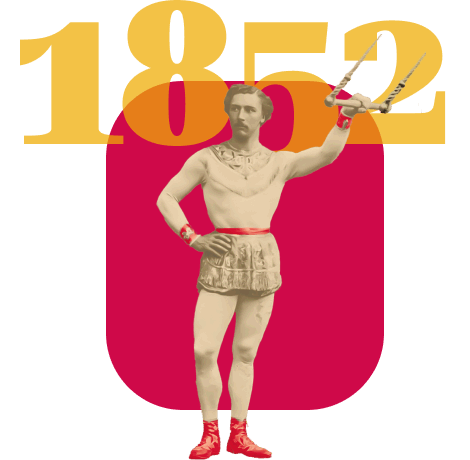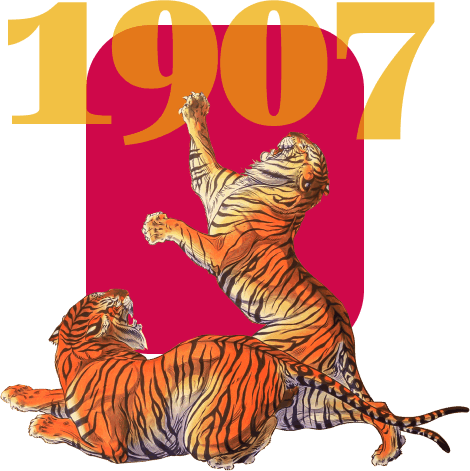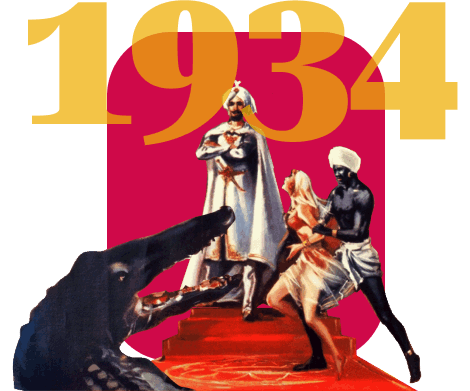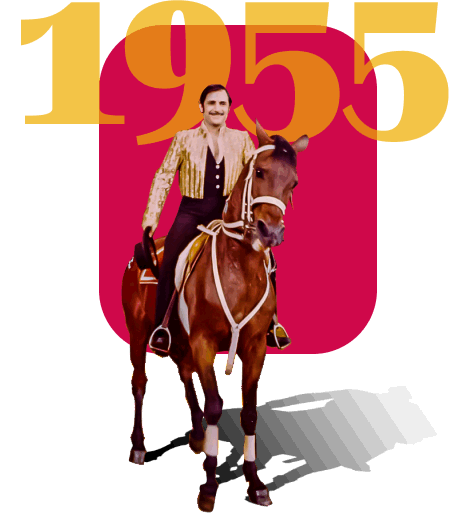1851-1909
The Circus Empire

Thanks to the Duke of Morny, the building permit was granted on December 17, 1851. It was Jacques Ignace Hittorf, architect of the Cirque d'été and the Gare du Nord, that Dejean called on. Work began on April 17, 1852 and lasted 8 months. It was Prince Louis Napoleon who inaugurated, on December 11, 1852, the circus to which he was to lend his name.
The Cirque Napoléon is 42 meters in diameter, and has 40 windows spread over 20 sections forming an icosagon, 21 gas chandeliers, 3,900 seats. Its interior and exterior decorations are entrusted to the great sculptors and painters of the time: Pradier, Bosio, Gosse, Barrias.
On November 12, 1859, Jules Léotard from Toulouse invented the flying trapeze at the Cirque d'Hiver (Cirque Napoléon). He was the first artist to soar into the air, from one trapeze to another...
At the fall of the Second Empire, the Cirque Napoléon became Cirque National to make way for the Cirque d'Hiver in 1873.
On December 27, 1907 Pathé took over the Cirque d'Hiver, transformed into a "Temple of Art Nouveau"; big cats and crocodiles no longer exist except on the screen.



